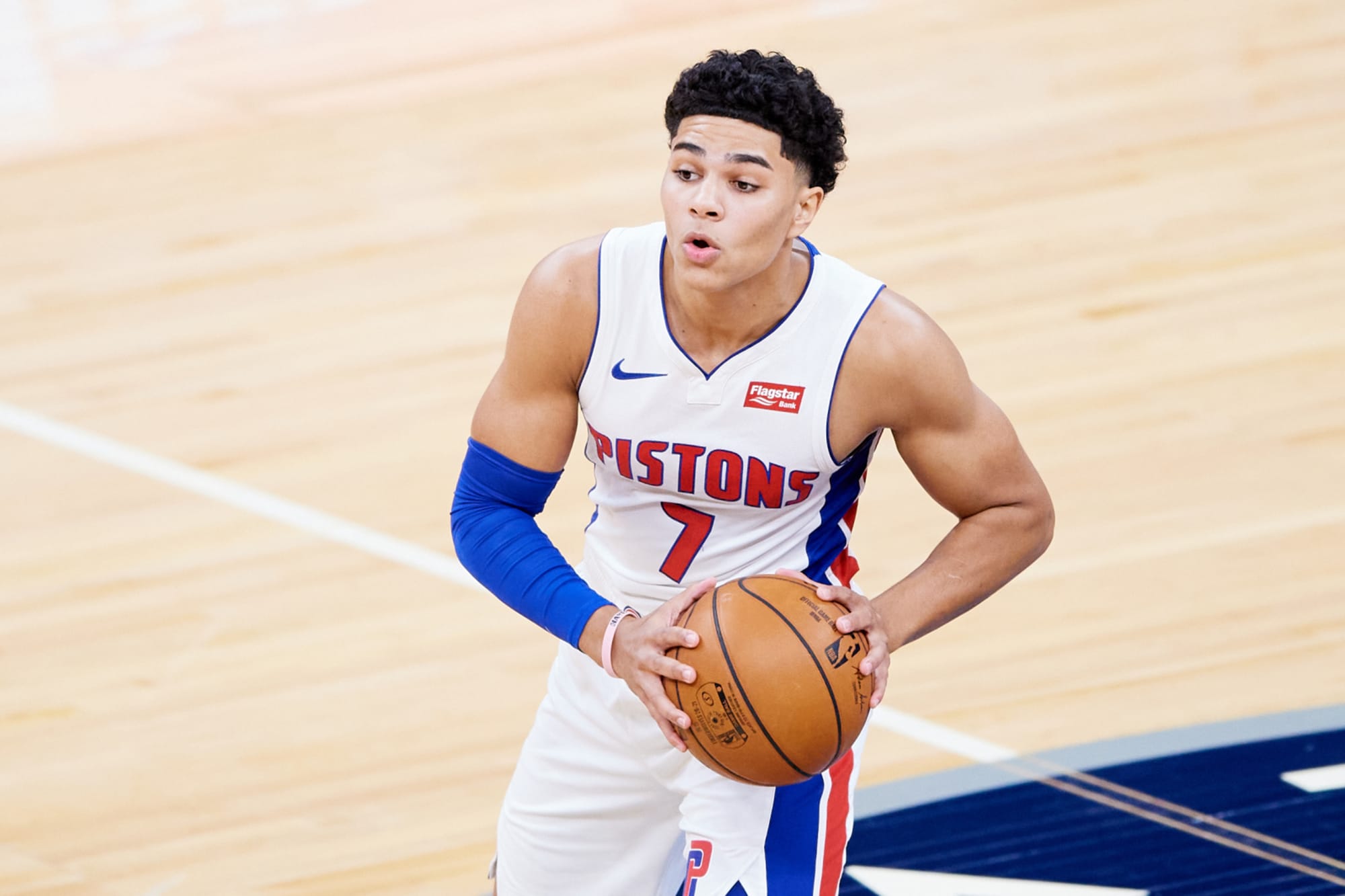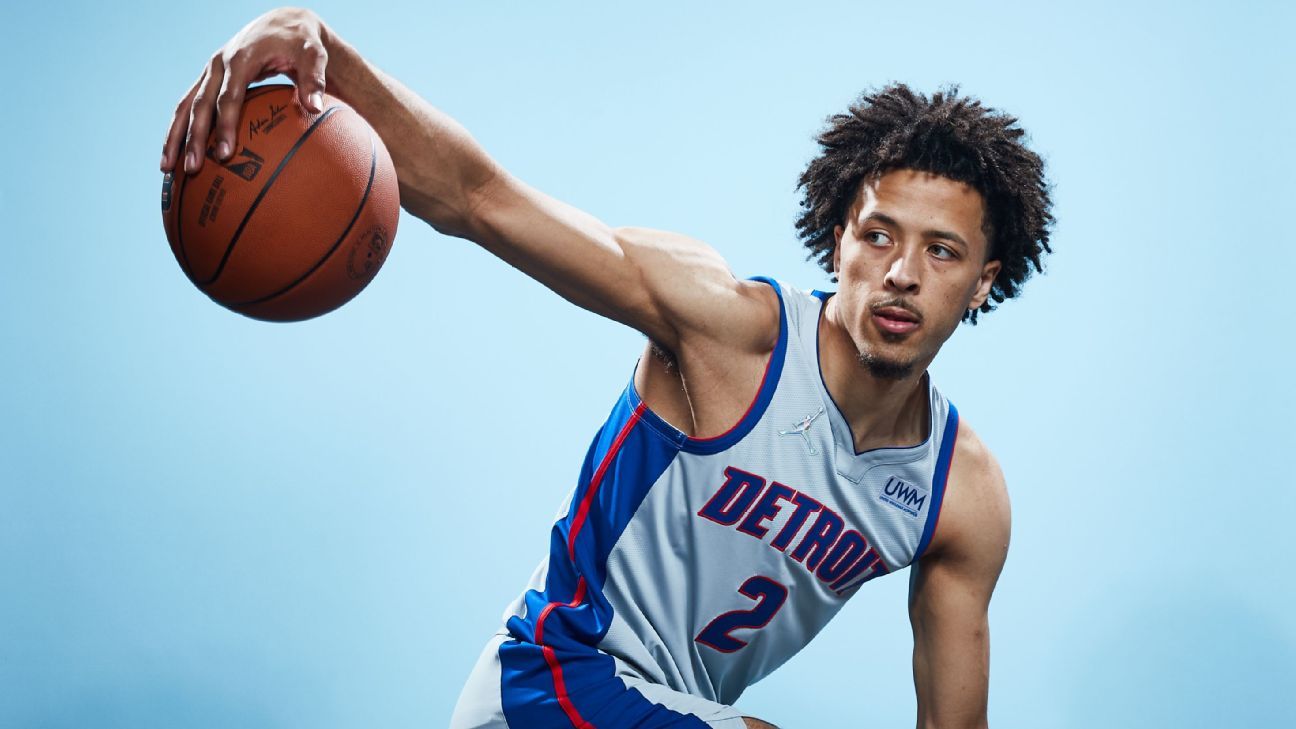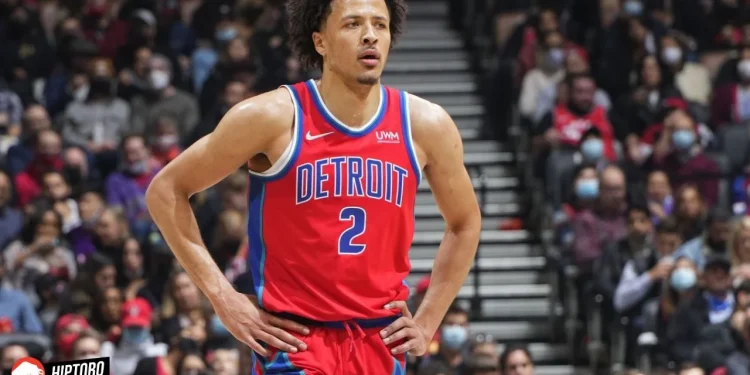In the realm of professional basketball, few stories are as intriguing as the rise of Cade Cunningham and the challenges he faces with the Detroit Pistons. This narrative isn’t just about a promising player; it’s a testament to a franchise’s struggle to harness the potential of a generational talent.

The Pistons’ Past Draft Triumphs and Recent Struggles
The Detroit Pistons, once a powerhouse in the NBA Draft, have seen their fortunes wane since their glory days in the 1980s. Back then, they were a team synonymous with success, drafting iconic players like Isiah Thomas, Joe Dumars, John Salley, and Dennis Rodman. These strategic picks led to their dominance in the late 80s, culminating in two NBA titles. However, post-1988, their draft prowess significantly diminished, marred by less impactful selections like Darko Miličić and Brandon Knight.
The Shift in Strategy and the Arrival of Cade Cunningham
The Pistons’ approach to drafting changed in the 2019-20 season, marking a shift towards a more deliberate losing strategy to enhance their draft lottery odds. This tactic paid off when they secured the first overall pick in 2021, landing Cade Cunningham, the standout from Oklahoma State University. Cunningham, known for his scoring versatility and playmaking ability, was seen as a beacon of hope for a franchise long mired in mediocrity.
The Toronto Raptors did this to the Detroit Pistons….
Cade Cunningham needs a new team. pic.twitter.com/GsNyBBmkKb
— عمر عثمان 🇦🇫 Mike Tyson’s Translator (@OmerOsman200) November 19, 2023
Cunningham’s Promise Confronts Detroit’s Dubious Decisions
However, the Pistons’ decisions post-Cunningham’s arrival have been baffling. Despite possessing a player of Cunningham’s caliber, the team has failed to provide him with a supporting cast that complements his playstyle. Instead, they have made questionable moves that do little to leverage his skills.
The Mismanagement of Talent Around Cunningham
Detroit’s roster choices reflect a lack of focus on enhancing Cunningham’s strengths. Key players like Killian Hayes and Jalen Duren, despite their talents, do not offer the shooting prowess needed to space the floor for Cunningham. This mismatch in playing styles has led to an inefficient offensive setup, hindering Cunningham’s ability to fully express his game.
A Comparison to NBA Greats
Cunningham’s style, likened to that of NBA stars like Luka Dončić and James Harden, requires a specific type of roster composition centered around shooting and spacing. The Pistons, however, have moved in the opposite direction, cluttering the lineup with non-shooters and thus limiting Cunningham’s impact.
The Pistons’ Roster: A Mismatch for Cunningham’s Style
The Pistons’ current roster configuration presents a stark mismatch for Cunningham’s playstyle. Notable players like Isaiah Stewart and Ausar Thompson, while talented, do not provide the necessary shooting support. Detroit’s persistence in playing Hayes, a subpar shooter, alongside Cunningham has raised questions about their commitment to building a team around their star player.
Statistical Insight into Cunningham’s Performance
Cade Cunningham’s statistics reflect the impact of the Pistons’ roster decisions. Despite averaging 21.4 points and 7.3 assists, his shooting percentages are below the expected standard for a player of his caliber. This discrepancy underscores the need for better roster support.

A Talent at Crossroads
Cade Cunningham’s journey with the Detroit Pistons is at a critical juncture. The franchise’s inability to surround him with the right talent not only risks wasting his potential but also casts a shadow over their future prospects. For the Pistons, the challenge is clear: adapt their strategy to maximize Cunningham’s immense potential or continue down a path that could lead to another era of unfulfilled promise.










